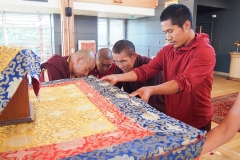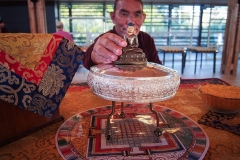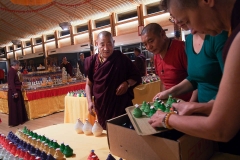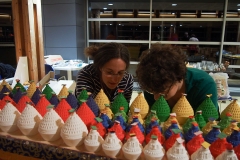A Puja in Good Auspice
[Watch the video / Plus de photos]
Before the mantra rolls and tsatsas could be placed within the stupa, they needed to be purified and consecrated. This consecration puja (1) took place during one week at Dhagpo and benefitted from the presence of two great lamas of the Karma Kagyu lineage: Nendo Rinpoche and Lama Nygyam. Both are accomplished practitioners and, furthermore, especially connected with Shamar Rinpoche.

Nendo Rinpoche and Lama Nygyam in front of the Institute’s Statue
Lama Nygyam spent many years in retreat and resided at Shamar Rinpoche’s monastery in Swayambhu, Nepal. He notably carried out a ten-year Mahamudra retreat before accepting the responsibility for the three-year retreat center at Parphing, Nepal. He also taught a course on Powa practice this summer at Dhagpo.
As for Nendo Rinpoche, he is Karmapa’s dorje lopon and that of the Karma Kagyu lineage, which means he is an ideal reference for all things concerning practice. For a vajrayana practice to be effective, three roles are essential: the chopon embodies the aspect of body and presents the offerings (tormas (2), incense, etc.) ; the umze, the chant master, directs the speech aspect of the practice, and finally, the dorje lopon masters all of the visualization and ensures that the practice is perfectly accomplished on the level of mind.
That Nendo Rinpoche was dorje lopon of the consecration ritual carried out at Dhagpo is an extraordinary thing! It is a very positive sign that he and Lama Nygyam were able to participate in the creation of Shamar Rinpoche’s stupa.

Ritual Transmission of the Reading of the Practice to Participants from Dhagpo and Kundreul Ling
During his stay at Dhagpo, Nendo Rinpoche took some time to explain the importance of the consecration puja and how to accomplish it.
As Nendo Rinpoche explained, during the creation of tsatsas and mantra rolls, the mind is agitated, jumping from one thought to another, from one emotion to its opposite. Greed, desire-attachment, or negative motivation can arise in these moments, bringing about numerous impurities. Therefore, it is essential to carry out a purification of such objects before even the consecration itself.
Following this purification, the puja that consecrates the tsatsas and mantra rolls is carried out during one, three, or seven days—the more days, the better. During the ritual, vows are taken, offerings are made and the blessing of the Buddhas, bodhisattvas, and other wisdom aspects is requested. When the last practice session comes to an end, the offering supports are thus purified, consecrated, and placed within the stupa.
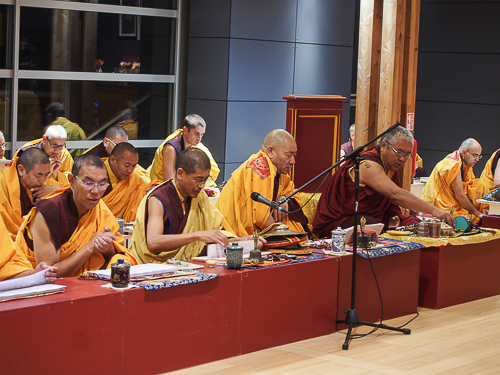 Taking Sojong Vows at Dawn
Taking Sojong Vows at Dawn
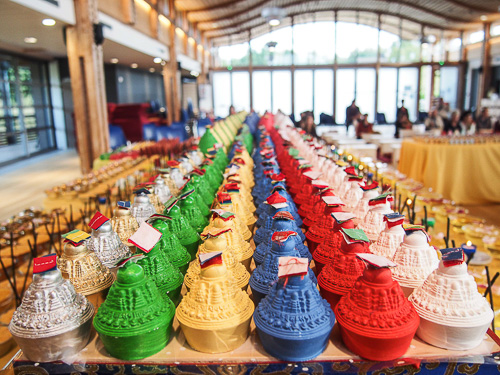
Tsatsas to Purify
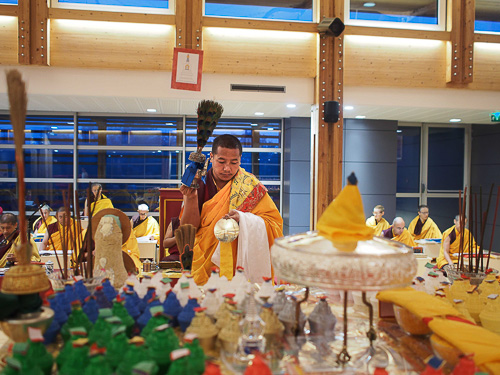 The Purification Phase
The Purification Phase
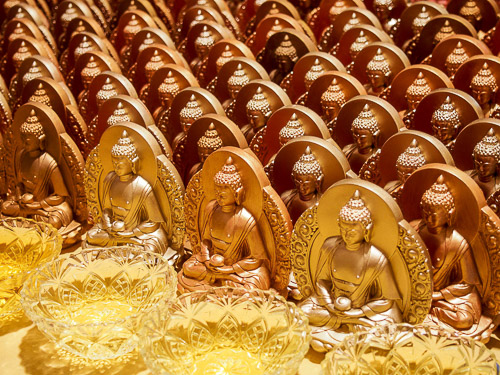
The consecration ritual necessitated several days of preparation. First, those responsible needed to make tormas and saffron rice and install the specific altars along with the offerings.
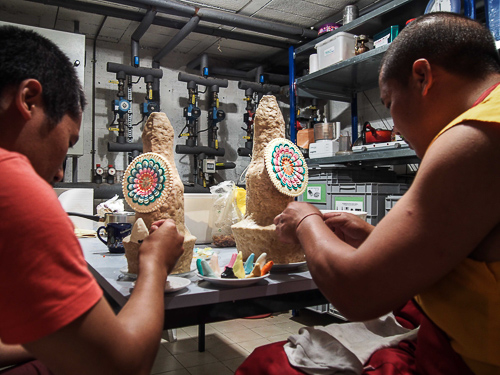 Making Tormas
Making Tormas
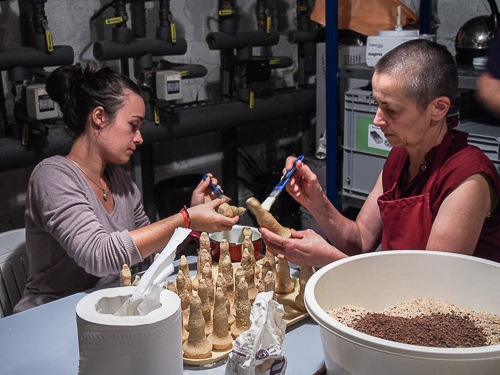
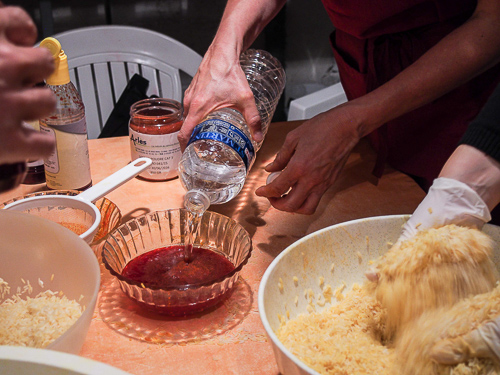 Adding Saffron to Rice
Adding Saffron to Rice
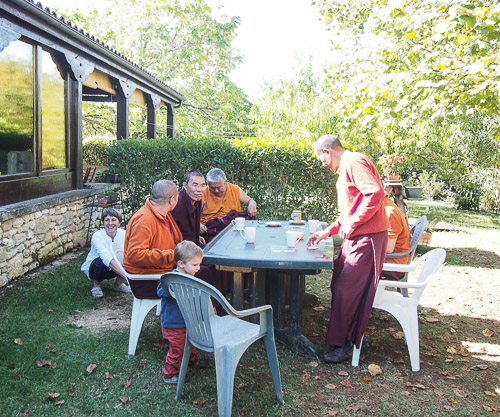 A Small Break in the Preparations
A Small Break in the Preparations
Second, as the puja took place in the Institute, we had to move the thousands of mantra rolls and hundreds of tsatsas from the library stacks to the great hall upstairs—where they needed to be arranged in a very precise order: the same in which they would be arranged within the stupa!
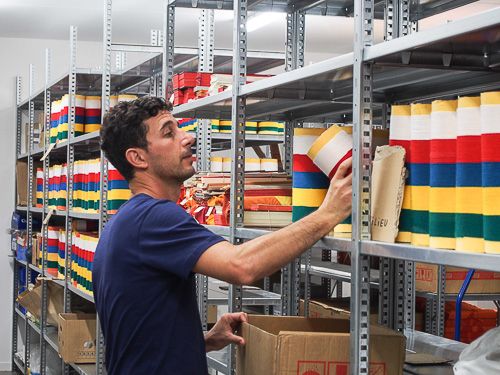
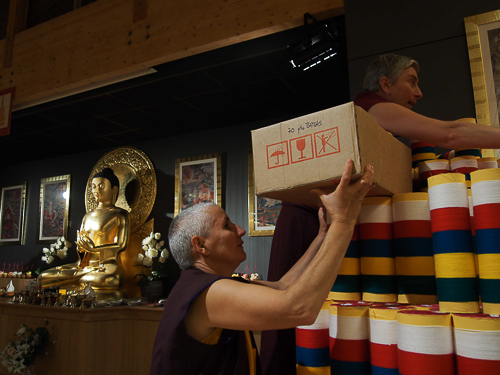
↑ Moving the Mantra Rolls from the Library to the Great Hall of the Institute
Once all of the preparations were completed and due to the unification of positive conditions, the community was able to carry out a week of intensive practice (from 6:30 in the morning to 8:00 in the evening) in mid-October. Dhagpo and Kundreul Ling’s lamas and drouplas joined Nendo Rinpoche, Lama Nygyam, and Lama Jampa to carry out this important step.
 Nendo Rinpoche et Lama Nygyam
Nendo Rinpoche et Lama Nygyam
 Lama Jampa et Lama Wangdu
Lama Jampa et Lama Wangdu
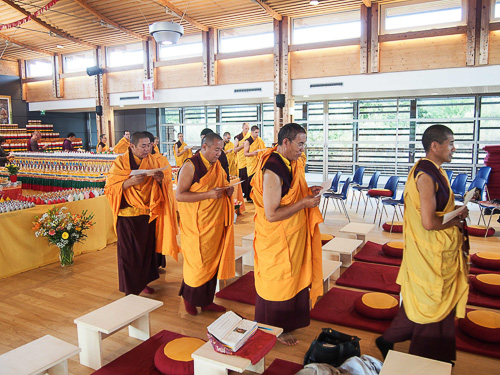 The Monastic Community
The Monastic Community
 The Community Practicing Together
The Community Practicing Together
At the conclusion of these seven full days of practice, the mantra rolls and tsatsas—finally ready to take on their role as pure, consecrated offering supports, were able to be placed within the first chamber of the stupa!
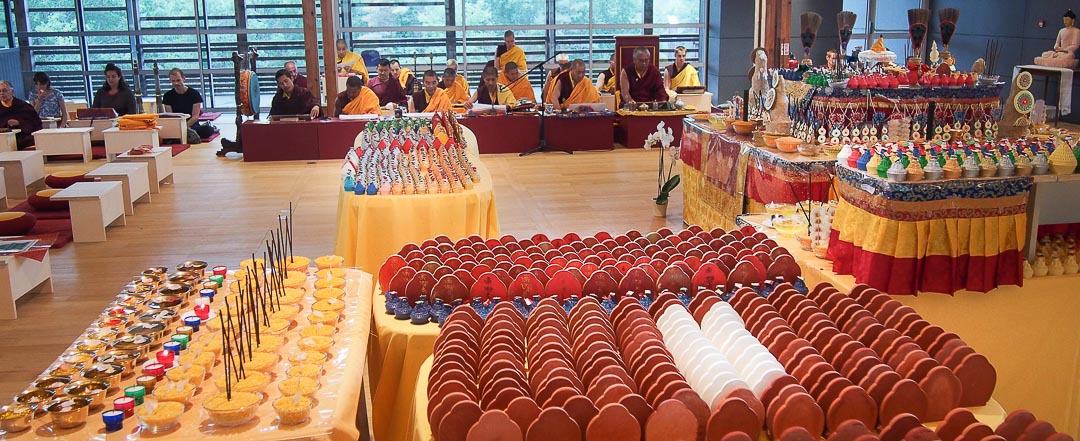 Practice in Full Swing
Practice in Full Swing
 A Family Photo at the End of the Week of Intensive Practice
A Family Photo at the End of the Week of Intensive Practice

